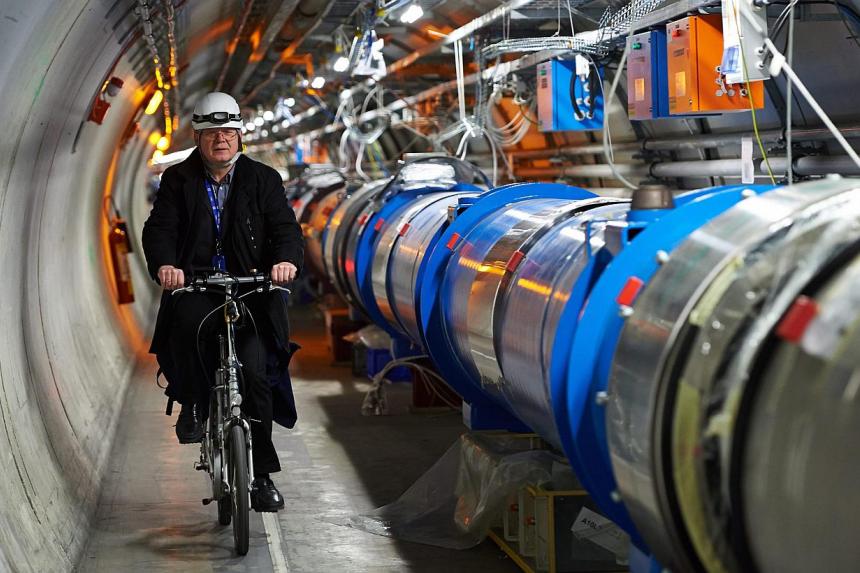ZURICH/GENEVA (Reuters, AFP) - Scientists at Europe's nuclear research centre CERN said on Sunday they had restarted their Large Hadron Collider (LHC) "Big Bang" machine after a two-year refit, launching a new bid to resolve some of the mysteries of the universe.
In a live blog covering the restart, CERN said one of the two beams had completed the circuit of the LHC.
The LHC had been shut down for two years for a refit of its machinery and wiring. Any new discoveries it makes are unlikely to emerge until mid-2016.
As part of the recommissioning process, engineers at the Large Hadron Collider (LHC) successfully introduced two proton beams, the source material for sub-atomic smashups.
All systems would be checked over coming days before the energy of the beams was increased, CERN said in a statement.
"After two years of intense maintenance and several months of preparation for restart, the Large Hadron Collider, the most powerful particle accelerator in the world, is back in operation," CERN said. "Today (Sunday) at 10:42 am (4:42 pm Singapore time) a proton beam was back in the 27-kilometre ring, followed at 12:27 pm by a second beam rotating in the opposite direction," it added.
CERN director for accelerators and technology described the LHC as "in great shape". "But the most important step is still to come when we increase the energy of the beams to new record levels," he said.
A short-circuit in one of the LHC's magnet circuits eight days ago had delayed the eagerly-awaited restart.
The LHC comprises a ring-shaped tunnel straddling the Franco-Swiss border, in which two beams of protons are sent in opposite directions. Powerful magnets bend the beams so that they collide at points around the track where four laboratories have batteries of sensors to monitor the smashups. The sub-atomic rubble is then scrutinised for novel particles and the forces that hold them together.
In 2012, the LHC discovered the Higgs Boson, the particle that confers mass, earning the Nobel prize for two of the scientists who, back in 1964, had theorised its existence.
The upgrade was intended to beef up its maximum collision capacity from eight teraelectronvolts (TeV) to 14 TeV - seven TeV for each of the two counter-rotating beams.
CERN said earlier that if all went well with the start-up particle collisions "at an energy of 13 TeV" could start as early as June.
During the next phase of the LHC programme, researchers will probe a conceptual frontier called new physics, with enigmatic "dark matter" the big area of interest. Ordinary, visible matter comprises only about 4 percent of the known Universe.

